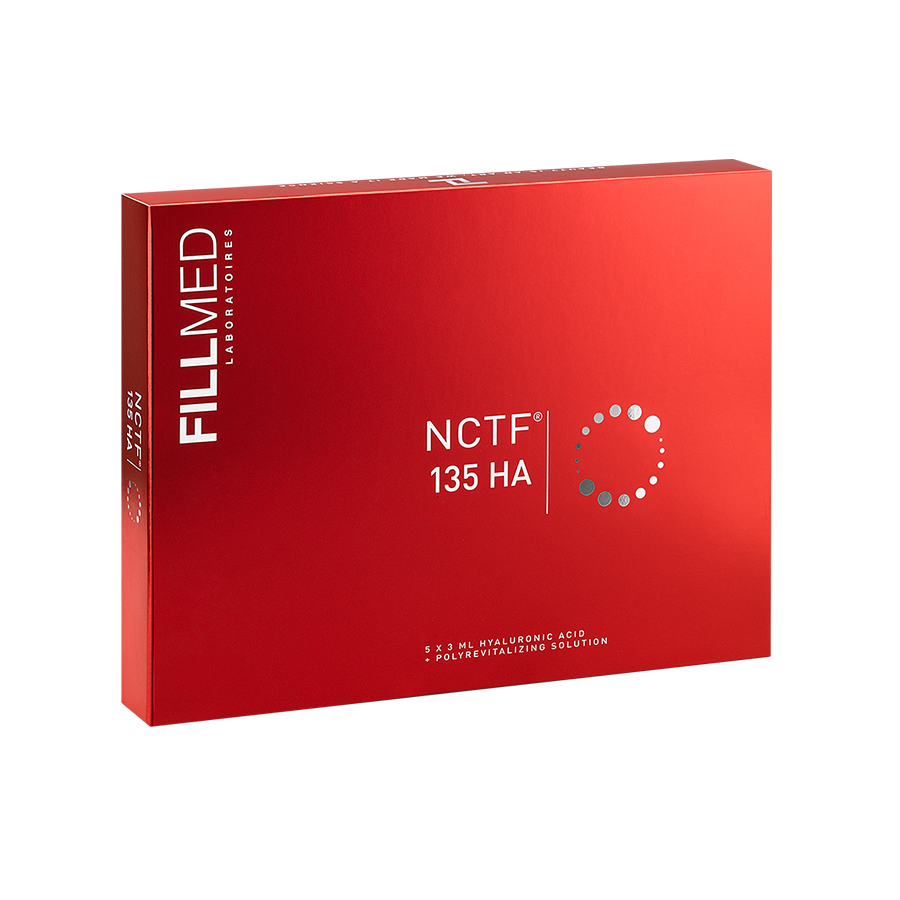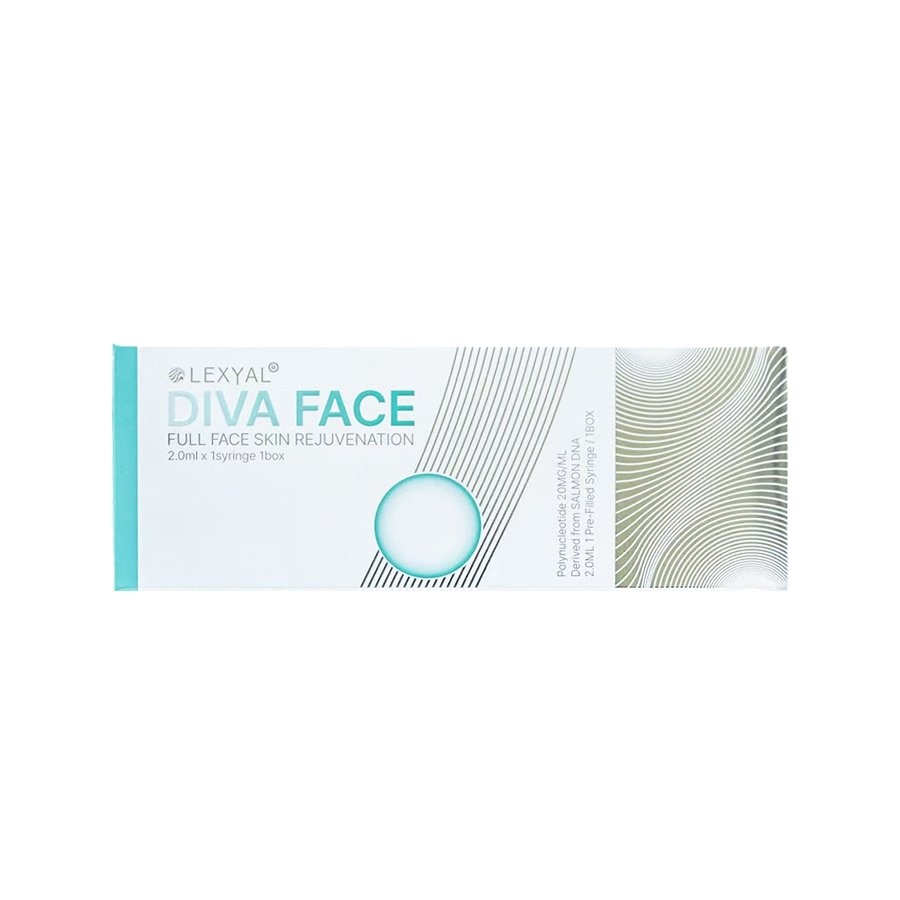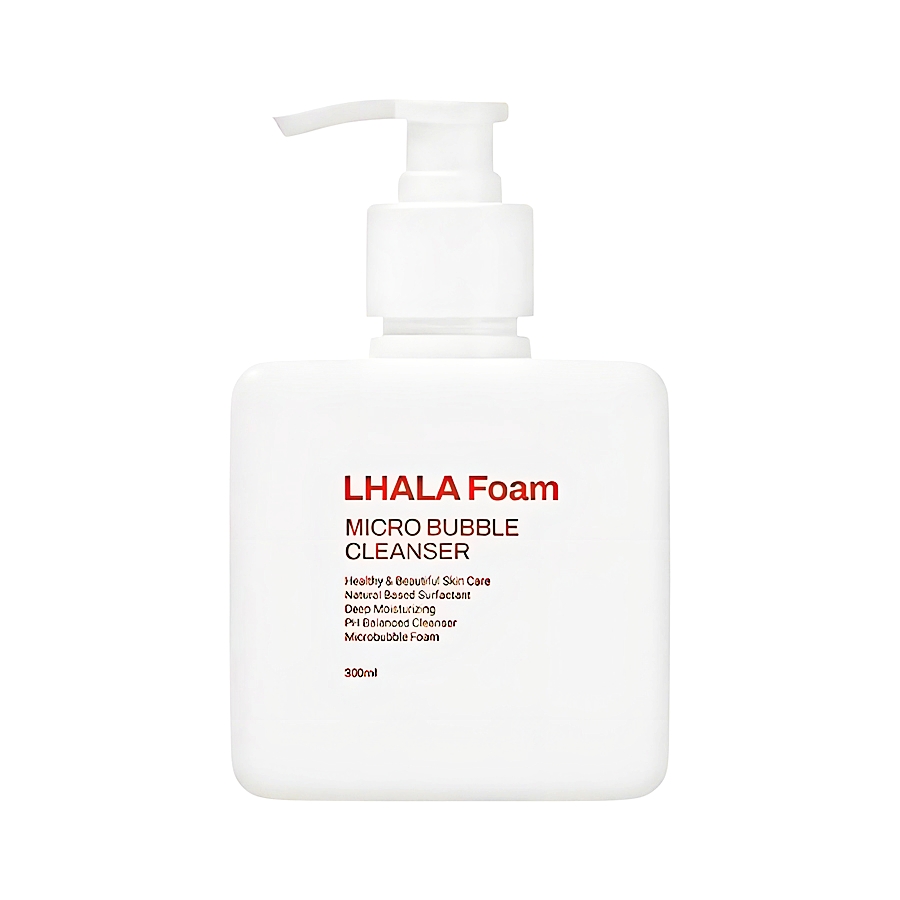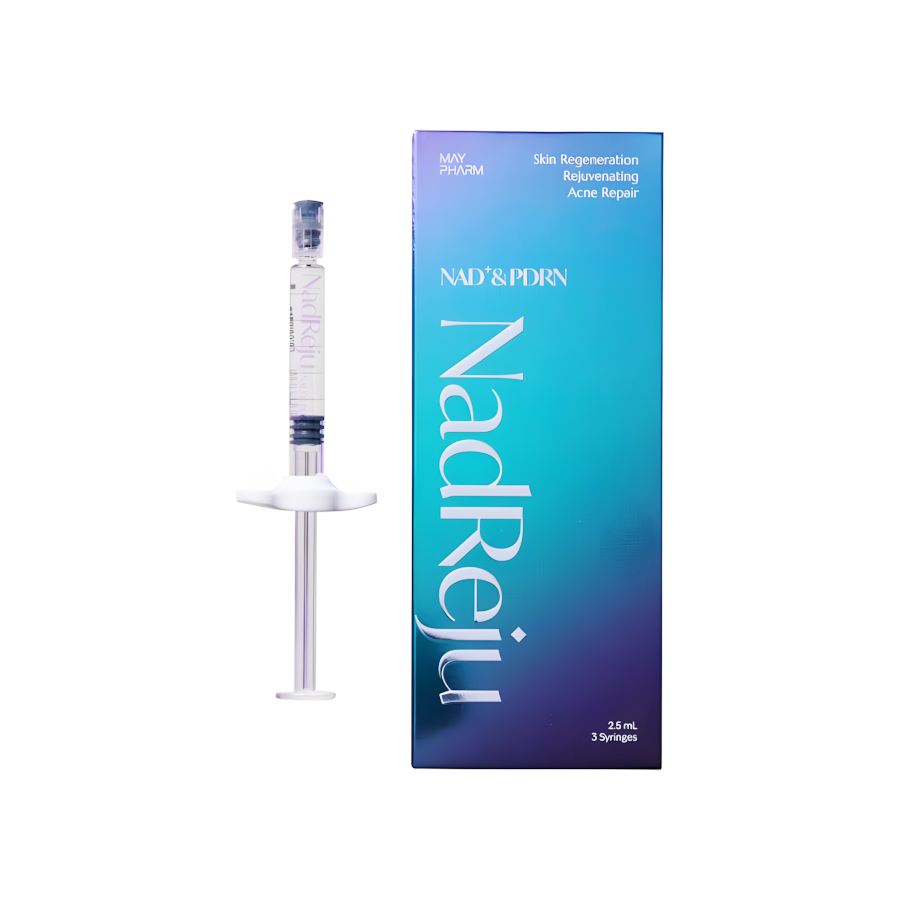Botulinum Toxin Type A targets users seeking dynamic wrinkle reduction (e.g., frown/crow’s feet lines), often aged 25+. In the U.S., prices average 300–600/session; clinicians inject 20–30 units subdermally into target muscles using fine needles for optimal muscle relaxation.
Table of Contents
ToggleTarget Users
In the global medical aesthetics market, Botulinum Toxin Type A contributes to approximately 32% of the consumption share in non-surgical procedures (ISAPS 2022 data), with the United States, Brazil, and Europe being the primary markets.
Research from the US medical aesthetics platform RealSelf shows: users aged 25-35 account for 41% of total injections, primarily for dynamic wrinkle management; 28% of those seeking contour adjustment are aged 20-40, with 63% targeting the masseter muscle or jawline; users aged 18-30 seeking treatment for localized hyperhidrosis account for 15%.
Dynamic wrinkles make you look older
After the age of 25, many people begin to notice: when making expressions, fine lines “catch” on a previously smooth face – crow’s feet appear when laughing deeply, vertical lines form between the brows when frowning, and horizontal lines appear across the forehead when raising it. These lines, which only appear during movement, are called dynamic wrinkles.
How do dynamic wrinkles form?
Research from the American Academy of Dermatology (AAD) shows: the average person makes about 3000 facial expressions per day (smiling, frowning, squinting, etc.). Repeatedly pulling the same muscle causes the skin’s elastic fibers to gradually “memorize” this movement pattern. Initially, it’s just a temporary crease (dynamic wrinkle), but if it continues for over 5 years, coupled with accelerated collagen loss, dynamic wrinkles can turn into static wrinkles (lines present even at rest).
For example: People who frown often have their corrugator supercilii and procerus muscles contract over 5000 times a day (2021 motion capture data from University College London), potentially leading to noticeable “frown lines” or “11’s” before age 30; those who stare at screens for long periods have their orbicularis oculi muscles working frequently due to squinting to relieve eye strain, potentially resulting in crow’s feet that are 27% deeper than their peers by age 35 (RealSelf user survey).
Who is most susceptible to being “aged” by dynamic wrinkles?
RealSelf 2023 injection statistics: Users aged 25-35 account for 68% of dynamic wrinkle injections, including:
- New entrants/Managers in the workplace (32%): Habitual frowning during frequent meetings or presentations leads to early frown lines;
- Long-term screen users (29%): Programmers, social media managers, etc., experience more pronounced crow’s feet due to overactive periocular muscles from squinting/focusing;
- Expressive individuals (25%): Those who naturally laugh heartily or raise their eyebrows often tend to develop forehead lines 1-2 years earlier than peers.
A study by the American Psychological Association found: People’s margin of error in age judgment based on dynamic wrinkles is 30% smaller than for static wrinkles.
How do dynamic wrinkles “disappear”?
The mechanism of Botulinum Toxin Type A on dynamic wrinkles is direct: it blocks the nerve signals that tell the muscle to “contract”. Taking frown lines as an example, 3-5 days after injection, the nerve signals to the corrugator supercilii and procerus muscles are inhibited, the muscles relax, and forceful pulling of the skin during frowning is reduced, naturally softening the lines.
Specifically, for different areas, the effects vary slightly (data from Allergan clinical tracking):
A 28-year-old advertising planner shared: “I always frown when working on proposals, and clients said I ‘look stressed.’ After treating my frown lines, in the first video conference, the other party said, ‘You seem much more relaxed than last time.'”
Why do some feel “it didn’t work”?
Not everyone sees wrinkles vanish immediately. New York dermatologist Dr. Lee mentions: The improvement rate of dynamic wrinkles is directly related to wrinkle depth – mild dynamic wrinkles (fine lines ≤0.5mm during expression) show over 80% improvement, but dynamic wrinkles deeper than 1mm may require combination therapy (e.g., with filler).
Additionally, injection dose and placement are crucial. For example, with crow’s feet, if the injection points are too far from the lateral canthus, they might not cover all contracting muscles; excessive dose might lead to “ectropion” (risk <2%, but requires an experienced injector).
Contour “Edge Correction”
Some people are told their face is “too square” in photos, others feel their jawline is “too sharp,” and some have a slight double chin despite not being overweight. These issues can be related to overdeveloped facial muscles.
Can injections reduce masseter muscle size?
The masseter is the chewing muscle on the sides of the jaw. Habitual chewing of hard foods, teeth grinding, or genetics can make it hard and bulky. Allergan’s 2023 clinical data shows: Approximately 35% of contouring requests are for masseter hypertrophy. Among these, 60% are fitness enthusiasts aged 25-35 (due to frequent consumption of protein bars, nuts), 30% are office workers with a childhood gum-chewing habit.
When is the masseter considered large enough for treatment? Place fingers on the cheeks, clench teeth – if you can feel prominent, hard muscle bulges that don’t fully subside upon relaxation.
Specific effect data:
- Onset time: 10-14 days post-injection, the masseter begins to soften (feels less hard to the touch);
- Visual change: Around 1 month, face width narrows by approximately 8%-12% (compared via 3D imaging by doctors);
- Duration: Average 5-8 months. With repeated injections (3-4 times yearly), muscle “memory” weakens, potentially prolonging effects later.
A 32-year-old yoga instructor shared: “I used to chew energy bars frequently, and my jaw became squarer. After masseter reduction, friends said my profile looked ‘edited smoother’ – it was just the muscle shrinking a bit.”
Can injections define the jawline?
The jawline is the curve from below the earlobe to the chin. Skin laxity, fat accumulation, or weak muscular support can blur this line, creating a “no-neck” appearance. RealSelf’s 2023 survey found: 28% of contouring users primarily target the jawline, including 45% women aged 30-40 experiencing mild skin laxity due to collagen loss, and 35% postpartum mothers (facial fat redistribution).
The essence of a blurred jawline is “soft tissue sagging + weak muscular support.” Botulinum Toxin A’s role here is not direct “lifting” but relaxing the platysma muscle around the jawline.
Effect comparison data:
- Improvement rate: 1 month post-injection, 72% of users reported “can see a jawline curve now”;
- Duration: About 6-7 months, can be extended with daily anti-aging care (e.g., radiofrequency devices);
- Perceived age: Clinical assessments show individuals with a defined jawline are often perceived as 3-5 years younger than their actual age (AAD 2022 study).
Can injections reduce a double chin?
Many mistake chubby cheeks for fat, but in the 18-28 age group, 40% of “baby fat” is influenced by the jawline muscles and platysma (ISAPS 2023 data). These individuals often have a short chin, a slight double chin, and a round face appearing “youthful.”
For this, doctors often use combined injections in the jawline and platysma: relaxing the platysma reduces downward pull, while adjusting jawline muscle tension sharpens the chin contour. Clinical data shows:
- Jawline injection only: 55% improvement in double chin appearance;
- Combined with platysma injection: Improvement rate increases to 78%;
- Duration: 6-8 months, effects may become more pronounced with repeated injections.
Worried about a “frozen” look with contouring injections?
New York dermatologist Dr. Patel explains: As long as the injection placement is precise, stiffness should not occur.
Key details to note:
- Dosage control: Recommended single-side masseter dose typically does not exceed 50 units (Allergan recommendation). Overdosing might cause “asymmetric smile”;
- Injector experience: Choose a doctor with 2000+ contouring injection cases for better control of diffusion radius (optimal <1cm);
- Aftercare: Avoid massaging the injection area for 24 hours to prevent diffusion to non-target areas.
Who is the best candidate for contouring? These 3 types see the most noticeable results
- Individuals with prominent masseters: Can feel hard muscle lumps when clenching teeth, “jaw angles” protrude in profile view;
- Individuals with a blurred jawline: Indistinct boundary between neck and jaw when looking down, appearing “to have no neck”;
- Individuals with stubborn “baby fat”: Not overweight but have slight fullness under the chin, unresponsive to diet or exercise.
High requirements for skin texture details
Some feel their skin doesn’t look “good enough” – not due to major issues, but visible pores, laxity, dullness, or persistent oiliness. These “detail-oriented” individuals might have thought aesthetics only addressed wrinkles, but now find: Botulinum Toxin A can address more skin concerns than imagined.
Is it suitable for enlarged pores?
Enlarged pores fall into two categories: “oily pores” stretched by sebum, and “sagging pores” caused by skin laxity. A 2022 study by the American Society for Dermatologic Surgery (ASDS) showed: 30% of individuals seeking treatment for enlarged pores choose Botulinum Toxin A, especially those aged 28-40 with “sagging pores” due to collagen loss.
Skin laxity weakens the support around pores, creating an “orange peel” appearance. Botulinum Toxin A’s role here is to stimulate collagen regeneration in the dermis. Allergan’s 2023 clinical data shows:
- 3 months post-injection, subjects’ pore visibility reduced by an average of 29% (measured by dermatoscope);
- After 2 years of consecutive injections, collagen density increased by 18%, significantly reducing the pore “sagging” appearance.
A 35-year-old editor shared: “My T-zone pores looked like ‘strawberry seeds,’ no astringent worked. After 3 sessions, my makeup artist said my base ‘looks airbrushed’.”
Can it tighten the skin slightly?
Not just wrinkles age you; skin laxity does too – like slight sagging in the cheeks or loss of elasticity around the eyes. RealSelf’s 2023 user survey found: 25% of Botox users cited “skin not firm enough” as a main concern, 60% of whom were aged 35-50 with mild to moderate laxity (not yet requiring thread lifts).
The logic behind Botulinum Toxin A improving laxity is modulating muscle tension, indirectly enhancing skin support. For example, periocular skin laxity is often related to overactive orbicularis oculi muscle. Post-injection, muscle relaxation allows the skin to naturally “rebound” upward.
Effect data:
- Onset time: 2-4 weeks post-injection, skin tightening sensation begins;
- Improvement rate: 82% of those with mild laxity (skin sag <2mm) reported “face looks less droopy”;
- Duration: About 5-7 months, effects can be enhanced when combined with radiofrequency treatments.
Can injections reduce oiliness?
Wash your face in the morning, but the T-zone is oily by noon. A 2021 study by the International Hyperhidrosis Society (ISH) found: 18% of individuals with oily skin choose Botulinum Toxin A for oil control, especially those aged 20-30 with overactive sebaceous glands.
Sebaceous glands are regulated by nerves; sympathetic nerve excitement stimulates excess sebum production. Botulinum Toxin A blocks these signals, inhibiting overactive glands. Allergan clinical tests show:
- 1 week post-injection, sebum secretion reduced by an average of 35%;
- Duration: 4-6 months, oiliness significantly reduced but won’t completely create “dry skin.”
A 27-year-old programmer said: “I used to need touch-ups by afternoon. Now, post-injection, my T-zone is only slightly shiny by the end of the day.”
Can injections make skin “brighter”?
Analysis of user reviews on the US aesthetics platform Zwivel in 2023: 15% of injectees mentioned “skin doesn’t look as bright as before”, potentially related to poor circulation caused by localized muscle tension.
Chronic muscle tension can compress capillaries, impairing skin oxygenation and metabolism. After Botulinum Toxin A relaxes the muscles, local blood flow improves, allowing better nutrient absorption and a brighter appearance. Clinical observation:
- 1 month post-injection, 68% of users reported “skin under eyes looks less dark”;
- Effect varies by area, most noticeable around eyes and mouth.
Anti-aging “preventative”
After 25, many start scrutinizing their reflection for wrinkles – not deep furrows yet, but barely visible fine lines when smiling, or faint impressions when frowning. Even though the skin is smooth at rest, they fear these “temporary lines” might become “permanent.”
Post-25, the fear isn’t existing wrinkles
A 2022 AAD study calculated: The average person makes about 3000 facial expressions daily. Repeatedly pulling the same muscle trains the skin’s elastic fibers to “memorize” the movement. For instance, frequent frowners have their corrugator supercilii contract over 5000 times daily (UCL 2021 data), potentially causing “dynamic frown lines” before 30.
RealSelf 2023 injection data: 45% of dynamic wrinkle injections are for ages 25-30, with 70% stating “I don’t have deep wrinkles yet, I’m preventing them.” This group includes programmers (squinting at screens), teachers (frowning while explaining), salespersons (frequent smiling).
Preventive anti-aging isn’t about filling wrinkles
Many think early anti-aging requires fillers, but the preventive logic is different: Wrinkles form from repeated muscle contractions “pulling” the skin; reducing contractions prevents lines. Botulinum Toxin A acts as a “temporary switch” for muscle contraction.
For frown lines, early injection can reduce corrugator supercilii contraction frequency by 40% (Allergan 2023 data). Fewer contractions mean dynamic wrinkles don’t deepen. Similarly, for crow’s feet, relaxing the orbicularis oculi prevents squint-induced lines.
Consider 5-year tracking data
Allergan conducted a 5-year study: 200 participants aged 25-30 with dynamic wrinkles, half received Botox, half did not. Results:
- Injection group after 5 years: Static wrinkle incidence was 38%;
- Non-injection group: Static wrinkle incidence was 62% – equivalent to delaying wrinkles by 5 years.
A 27-year advertising planner shared: “I always frowned during planning, causing a faint line. Started preventive injections at 25. Now, 3 years later, colleagues say I ‘have no wrinkles’ – actually, I just have very shallow lines when smiling, much less noticeable.”
Don’t wait for preventive injections!
Many think “I’ll start when lines get deeper,” but early intervention is far more effective than treating established wrinkles. An ISAPS 2023 study categorized dynamic wrinkles:
- Grade 1 (Mild): Fine lines ≤0.3mm during expression, like “shadows”;
- Grade 2 (Moderate): Lines 0.3-0.5mm, faintly visible at rest;
- Grade 3 (Severe): Lines >0.5mm, present at rest (static wrinkles).
Injecting Grade 1 dynamic wrinkles yields up to 92% improvement, and lines are unlikely to deepen significantly. Treating Grade 3 static wrinkles often requires Botox plus fillers, with only 65% improvement and potentially less natural results.
RealSelf reviews include regrets: “I waited until my frown lines were deep. They’re lighter now, but I can still feel the muscle band. Not as natural as early intervention.”
Who should consider preventive injections now? 3 signals
Not everyone needs early treatment, but these 3 types should consider it post-25:
- Heavy “expression users”: Frowning, squinting, raising eyebrows over 100 times daily;
- Family history of early wrinkles: Mother or grandmother had noticeable frown lines/crow’s feet before 30;
- Decreased skin elasticity: Cutometer measurement shows elastic modulus below 20 kPa.
RealSelf 2023 survey: Those matching these signals have an 80% chance of developing noticeable dynamic wrinkles within 2 years. Early injection can reduce this risk to below 30%.
Price Guide
2023 data from the International Society of Aesthetic Plastic Surgery (ISAPS) shows Botulinum Toxin injections account for 34% of global non-surgical aesthetic procedure volume, with over 12 million services annually in Europe and the US.
In consumer decision-making, 68% focus on comparing price differences: Botox single vial (100 units) average end-price $550-$750, Dysport around $400-$600; periocular wrinkle treatment (50-100 units) costs $300-$800, masseter contouring (100-200 units) $400-$1000.
Factors Influencing Price
Market strategy matters. Botox targeted the premium market early, with high advertising, leading to brand premium. Dysport entered later, competing on value, hence ~20% lower end cost. Risk-averse consumers may pay more for Botox; budget-conscious may find Dysport sufficient.
Treatment area directly impacts cost
Consider the eye area. Crow’s feet involve thin skin, muscle layer only 2-3mm thick. Precision is key to avoid affecting the levator palpebrae (eyelid muscle). Doctors often choose Botox, typically 50-100 units – 50 units may suffice for mild lines, 100 units can last 6-12 months. Drug cost alone is $200-$450, plus procedure fee, total $300-$800 is common.
Masseter muscle. This chewing muscle can be 1.5-2cm thick when clenched. Adequate dose is needed to relax it. Typically 100-200 units, Dysport or Botox. Drug cost $200-$450, but deeper placement requires longer needles, more time, so total $400-$1000.
Jawline lifting. Targets the platysma muscle, large area but requires “mild relaxation.” Typically 100-150 units, often Botox for precise control. Cost $500-$900, cheaper than masseter but more than basic wrinkle treatment due to technique.
Location affects spending
Community clinics are cheapest. Located in residential areas, low rent, basic equipment, focus on standard procedures. E.g., crow’s feet might be $300-$500.
Chain aesthetic centers mid-range. E.g., US chains like Cosmetique Clinics have bulk purchasing, cost control, transparent pricing. Masseter contouring might be $600-$800, including pre-op skin check, post-op care (ice pack, cream). Advantage: rotating doctors, often 5+ years experience, lower error risk.
High-end private clinics can be 40% more expensive. E.g., New York’s Park Avenue Plastic Surgery, offers “customized service.” Pre-op 3D facial scanning analyzes muscle movement, injection points tailored to habits (smiling/frowning). Crow’s feet might cost $800-$1200, but includes dedicated nurse follow-up.
Practitioner skill affects price
A US aesthetics association survey found practitioners with 5+ years experience have 35% lower “dosing error rate” than novices. Novices might estimate; experienced practitioners may use “grid mapping” for precise dosing, error <5%.
E.g., masseter injection requires reaching the muscle belly. Experienced practitioners might use ultrasound guidance; novices rely on feel. These technical details reflect in cost – experienced practitioner’s fee may be $50-$150 more per session.
Reference Prices
Periocular Dynamic Wrinkles (Crow’s Feet)
AAD recommends 50-70 units for mild lines (visible only when smiling), 80-100 units for severe (visible at rest).
Brand choice: 90% of clinics recommend Botox – its smaller diffusion radius (~0.7cm) targets the orbicularis oculi precisely, reducing risk of affecting the eyelid muscle.
Community clinic using Botox, 50 units: $300-$400. Chain center, Botox 70 units, includes pre-op dermatoscopy: $500-$600. High-end clinic may use “micro-droplet” technique (smaller doses, multiple points), more natural, 100 units: $700-$800.
Frown Lines (Glabellar Lines)
Two types: dynamic (appear with expression) and static (present at rest). Botox works well for dynamic; static may need filler combo.
Dynamic frown line injection targets corrugator and procerus muscles. Typically 80-120 units. Both Dysport and Botox can be used – Dysport’s wider diffusion (1.1cm) covers deeper muscles, but requires precise placement to avoid affecting frontalis (brow lifting).
Price: Dynamic lines cheaper than static. Community clinic, 80 units Dysport: $400-$500. Chain center, Botox 100 units, includes post-op serum: $600-$700. Static lines requiring additional filler increase total cost >$800.
Masseter Contouring (Facial Slimming)
Masseter hypertrophy contributes to a “square jaw” – the hard muscle felt when clenching. Botox induces “disuse atrophy.”
Dose depends on masseter size. Press fingers on jaw angle, clench: Thin (1-1.5cm) requires 100-150 units, thick (1.5-2cm) needs 150-200 units. Dysport often more cost-effective – wider diffusion (1-2cm) covers deep muscle fibers more evenly.
Price varies. Community clinic, Dysport 100 units: $400-$500. Chain center, Botox 150 units, includes 3 post-op massages (aid diffusion): $700-$800. High-end clinic may perform pre-op CT scan to measure thickness, precise dosing, 200 units: $900-$1000.
Jawline Definition/Lift
Ideal for blurred jawline, slight double chin. Relaxes superficial platysma, not a “lift,” but reduces downward pull for natural definition.
Typically 100-150 units of Botox – precise, targets superficial platysma, avoids deep injection risks. Requires layered injection along the jawline.
Price: Cheaper than masseter, more than eyes. Community clinic, Botox 100 units: $500-$600. Chain center, Botox 120 units, includes post-op neck cream: $700-$800. High-end clinic may combine with radiofrequency (e.g., Thermage), total $800-$900.
Calf Muscle Reduction
Thick calves: fat or muscle. Botox works only on muscular calves (feel tight/hard when pointing toes). Can reduce circumference by 1-2cm.
Dose by muscle thickness. Ultrasound measures gastrocnemius: Thin (2-3cm): 200-250 units, thick (3-4cm): 250-300 units. Dysport often preferred – wider diffusion covers deep fibers evenly.
Higher cost. Community clinic, Dysport 200 units: $600-$700. Chain center, Dysport 250 units, includes exercise guidance (avoid post-op overuse): $800-$900. High-end clinic may use electromyography to locate muscles, precise injection, 300 units: $900-$1000.
Assessing Price Reasonableness
The American Society of Plastic Surgeons (ASPS) publishes an annual “Non-Surgical Aesthetic Pricing Report” with national averages.
E.g., for periocular dynamic wrinkles, 2024 ASPS data shows national average clinic quote is $550-$750. A quote of $300 (45% below average) may be suspicious; $900 (20% above) might use premium Botox or highly experienced doctor.
For masseter contouring, ASPS average is $600-$900. A community clinic quoting $400 might use Dysport but underdose (e.g., 80 units vs standard 100-150); a high-end clinic quoting $1200 might include 3 follow-ups + specialized products.
Clarify brand and units used
Reasonable pricing requires transparency. Low-price traps often involve vague quotes – e.g., “slimming injections $300” without specifying brand or units.
Always ask for two specifics: Brand and Units.
- Brand: Botox and Dysport cost differ 20%-30%. If a clinic claims Botox but price matches Dysport, might be counterfeit or diluted.
- Units: Standard dose ranges exist. E.g., crow’s feet: mild 50-70 units, severe 80-100 units. If a doctor suggests “30 units of Botox,” it’s likely insufficient, short-lived.
Example: Masseter contouring, standard Dysport dose 100-200 units. A $400 quote for “100 units Dysport” is fair. But $400 for only 80 units means a higher per-unit cost.
Check facility credentials
US aesthetics is regulated. Legitimate facilities must meet:
- Practitioner Credentials: Injecting doctor must have state medical license; ASPS-certified “Aesthetic Injection Specialist” is preferable. Request to see license or verify on ASPS website.
- Product Traceability: Botox and Dysport have anti-counterfeit codes. Legitimate clinics can provide packaging codes verifiable on manufacturer websites (e.g., Allergan for Botox).
A 2023 FDA spot checks found 15% of non-compliant clinics used unapproved products.
Understand what the quote includes
Some quotes are low because they “only cover the injection, exclude other services.” Ask: “Does this price include the pre-op consultation? Is the post-op care kit extra?”
- Pre-op consultation: Legitimate clinics perform basic skin/muscle assessment; may be included or charged separately ($50-$100).
- Post-op care: e.g., ice pack, recovery cream; some include free, others charge $20-$50.
- Touch-up discounts: Effects last 3-6 months; many clinics offer discounts for follow-up sessions (e.g., 20% off second session). A very low initial price might aim to recoup costs later.
Example: Clinic A quotes “$400 for masseter contouring” but excludes $50 consultation and $30 care kit, real cost $480. Clinic B quotes “$500 all-inclusive,” potentially better value.






















